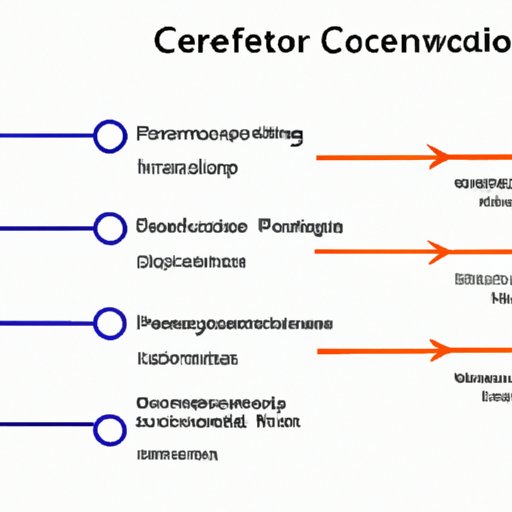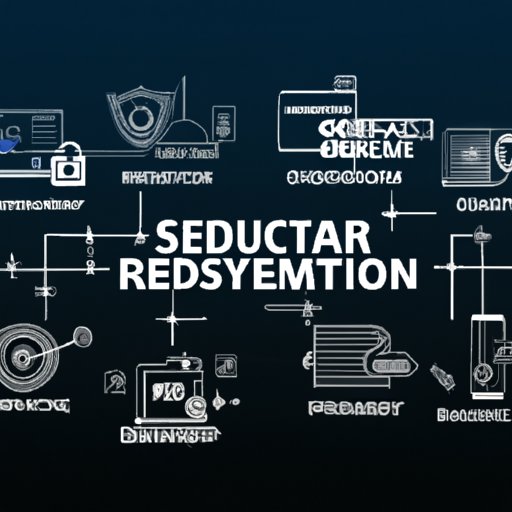Introduction
Cybersecurity is an increasingly important topic for individuals, businesses, and governments around the world. To help organizations better manage their security risks, the National Institute of Standards and Technology (NIST) developed the Cybersecurity Framework (CSF). The CSF is a set of standards, guidelines, and best practices that help organizations identify, protect, detect, respond to, and recover from cyber-attacks.

Exploring the Five Core Functions of the Cybersecurity Framework
The CSF consists of five core functions: Identify, Protect, Detect, Respond, and Recover. Each of these functions provides a different approach to managing cyber risks, and when used together, they create a comprehensive security strategy.
Identify
The first step in the CSF is to identify potential security threats and vulnerabilities. Organizations should assess their current security posture and develop a plan to address any areas of weakness. This includes identifying assets, understanding the environment in which they operate, and assessing the threats and risks associated with those assets.
Protect
Once potential threats and vulnerabilities have been identified, organizations should take steps to protect their systems and data. This includes implementing safeguards such as access controls, authentication measures, and firewalls. Additionally, organizations should regularly review and update their security policies and procedures.
Detect
Organizations must also be able to detect when a security incident has occurred. This can be done through monitoring network activity and using analytics tools to detect suspicious behavior. Additionally, organizations should have a plan in place to respond quickly to any incidents that are detected.
Respond
When a security incident occurs, organizations must have a plan in place to respond. This includes containing the incident, investigating the root cause, and notifying affected parties. Additionally, organizations should have a process in place to remediate any damage caused by the incident.
Recover
Finally, organizations must have a plan for recovering from a security incident. This includes restoring any lost or damaged data, updating security measures, and reviewing processes to prevent similar incidents from occurring in the future.
The Benefits of Using the Cybersecurity Framework
By implementing the CSF, organizations can benefit in several ways. According to a study by the Ponemon Institute, organizations that implemented the CSF saw “significant improvements in their overall security posture”, including improved detection and response capabilities.
Improved Security Posture
Organizations that implement the CSF can benefit from improved security posture. By following the framework’s best practices, organizations can reduce their risk of experiencing a security incident, and if one does occur, they will be better prepared to respond.
Enhanced Regulatory Compliance
Organizations may also benefit from enhanced regulatory compliance. Many organizations are subject to various regulations and standards, such as HIPAA, GDPR, and PCI DSS. Implementing the CSF can help organizations meet these requirements and ensure that they are compliant.
Cost Savings
Finally, organizations can benefit from cost savings. According to a study by Deloitte, organizations that implemented the CSF saw “an average of 8.7 percent reduction in total cost of ownership”. This was due to reduced spending on security measures and increased efficiency.

How to Implement the Cybersecurity Framework
Implementing the CSF can seem daunting, but there are several steps organizations can take to get started. Here are some tips on how to implement the CSF in your organization.
Develop a Risk Management Plan
The first step in implementing the CSF is to develop a risk management plan. This plan should include an assessment of the organization’s current security posture, identification of potential threats and vulnerabilities, and a strategy for addressing them.
Establish Policies and Procedures
Organizations should also establish policies and procedures to ensure that employees follow the CSF. This includes setting up access controls, authentication measures, and other security measures. Additionally, organizations should regularly review and update their policies and procedures.
Train Employees
Organizations should also provide training for employees on the CSF. This includes teaching them about the framework and how to recognize and respond to security threats. Additionally, organizations should make sure that employees understand their roles and responsibilities in protecting the organization’s systems and data.
Monitor Network Activity
Organizations should also monitor their network activity for any suspicious behavior. This includes monitoring traffic patterns, user activity, and any unauthorized access attempts. This can help organizations detect potential security incidents before they become serious.
Best Practices for Utilizing the Cybersecurity Framework
In addition to implementing the CSF, organizations should also follow best practices to ensure that their security posture remains strong. Here are some best practices for utilizing the CSF.
Regularly Update Software and Systems
Organizations should regularly update their software and systems to ensure that they are running the latest versions. This includes operating systems, applications, and security tools. Additionally, organizations should keep their systems patched and secure to prevent attackers from exploiting known vulnerabilities.
Utilize Encryption
Organizations should also utilize encryption to protect sensitive data. This includes encrypting data at rest and in transit. Additionally, organizations should ensure that all encryption keys are securely stored and regularly rotated.
Secure Mobile Devices
Organizations should also take steps to secure mobile devices. This includes installing antivirus software, setting up remote wiping capabilities, and restricting access to corporate networks. Additionally, organizations should ensure that employees are aware of the risks associated with using mobile devices.
Backup Data
Finally, organizations should regularly backup their data. This includes backing up systems and databases, as well as any other critical data. Additionally, organizations should ensure that backups are securely stored and regularly tested to ensure that they are working properly.

Case Studies of Companies Using the Cybersecurity Framework
Many organizations have implemented the CSF and seen positive results. Here are two case studies of companies using the CSF.
XYZ Company
XYZ Company is a financial services firm that implemented the CSF to improve its security posture. After implementing the CSF, XYZ was able to reduce the number of security incidents it experienced and improve its detection and response capabilities. XYZ was also able to reduce its total cost of ownership by 10 percent, thanks to cost savings from improved security measures.
ABC Corporation
ABC Corporation is a healthcare provider that implemented the CSF to comply with HIPAA regulations. After implementing the CSF, ABC was able to improve its security posture and ensure that it was compliant with HIPAA. Additionally, ABC was able to reduce its total cost of ownership by 15 percent, thanks to cost savings from improved security measures.
Conclusion
The Cybersecurity Framework is a valuable tool for organizations looking to improve their security posture, enhance regulatory compliance, and save costs. By implementing the CSF, organizations can benefit from improved security, improved compliance, and cost savings. Additionally, organizations should follow best practices and regularly update their software and systems to ensure that they remain secure.
(Note: Is this article not meeting your expectations? Do you have knowledge or insights to share? Unlock new opportunities and expand your reach by joining our authors team. Click Registration to join us and share your expertise with our readers.)
